Copyright © Wolverhampton Photographic Society 2023

No image or design on this site may be copied or used in printed or digital form without permission
and all photographs remain the property and copyright of the original photographer.
The
Oscar G Rejlander
Commemorative
Blue Plaque
In 1988, to commemorate the 100th anniversary of the foundation of
Wolverhampton Photographic Society the Committee, led by the newly
elected President Jim Dowdall, organised several public events.
Interestingly, four current members of Wolverhampton
Photographic Society were members of the 1988 committee –
life members Gerry Treadwell and Gerald Hanrahan as well as
John Holt and Mike Piper, who is still member of the WPS
committee. (2017)
The events they organised included a lecture by Dr. Heather
Angel at the Wulfrun Hall in Wolverhampton, and an
exhibition at the Wolverhampton Art Gallery of retrospective
photographs. Wolverhampton Photographic Society also
funded the erection of a plaque, by the Wolverhampton Civic
& Historical Civic Society, to the memory of Oscar Rejlander.
It was placed on the wall of an office block at 42-46
Darlington Street and was located as near as possible to the
now demolished site of Rejlander’s studio at 42 Darlington
Street, as shown in the photos. Oscar G Rejlander, “The
Father of Art Photography”, lived in Wolverhampton for
twenty years and it was in his studio he produced the world-
famous composite photograph ‘The Two Ways of Life’.
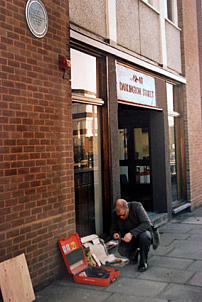
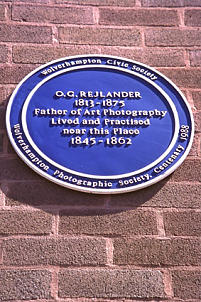
The erection of the original commemorative plaque on the wall
in Darlington Street in 1988
The building in lower Darlington Street, which housed
Rejlander’s studio, was demolished in the mid-1960’s to make
way for Wolverhampton’s ring road development. The
monochrome photo shows the location of Rejlander’s studio
prior to demolition, then being used as shops.
Today, much of the space where these those buildings once
stood is now Fold Street Car Park. New Buildings were erected
on this site close to the Chapel Ash traffic island on Lower
Darlington Street, with the first one being a brick-built suite
of offices numbered 42-46 Darlington Street. This was then
the closest building to the original site of Rejlander’s studio
and in 1988 it was therefore the location chosen for the
original blue commemorative plaque. Subsequently, believed
to be in 2007, the plaque was removed by Wolverhampton
Civic & Historical Society for storage and safe keeping before
the building upon which is was located was demolished.
Wolverhampton Civic & Historical Society kept the plaque in
storage until it was needed for a major photographic
exhibition. This was at the City’s art gallery from November
2013 to February 2014 and celebrated the 125th anniversary
of Wolverhampton Photographic Society.
Following additional research, more information about
Rejlander’s time in Wolverhampton was discovered including
that he first arrived in Wolverhampton in 1842, a few years
earlier than had previously been thought. Accordingly, it was
decided to erect a new and updated commemorative plaque
and, together with the Wolverhampton Civic & Historical
Society, it was decided to mount it on a wall on the opposite
side of Darlington Street as this was now the closest suitable
location.
The plaque was unveiled in a formal ceremony on 30th August
2016 and this is where you will find it today.
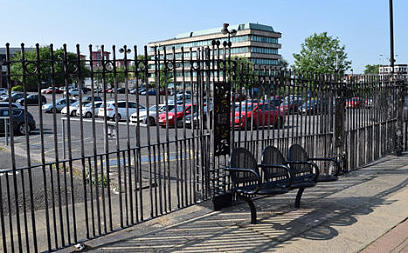
Although subsequently used for shops, this is where Rejlander’s studio
was located prior to demolition in the mid-1960’s
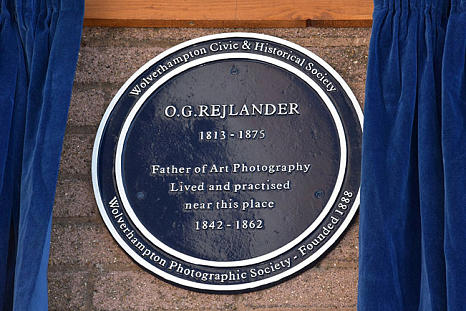
The Mayor of Wolverhampton, Barry Findlay
and the Lady Mayoress, with Wolverhampton Photographic Society
members (the late) David Kingston (right) and Roy Hawthorne (left),
with a replica of the new Rejlander Commemorative plaque.
The actual plaque is mounted on the wall behind them. (2016)
The new blue plaque in honour of Oscar Rejlander
which commemorates his pioneering work carried out at his studios
at 42 Darlington Street, Wolverhampton. In this tiny studio he pioneered
Art Photography and, in 1857, produced his famous
composite photograph ‘The Two Ways of Life’
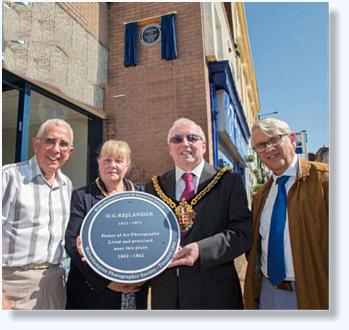


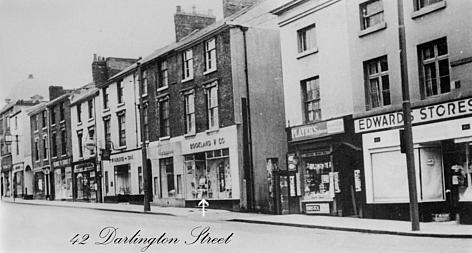
Fold Street car park in lower Darlington Street which
now occupies the space where Rejlander’s studio was located

Copyright © Wolverhampton Photographic Society 2017

No image or design on this site may be copied or used in printed form or digitally without permission
and all photographs remain the property and copyright of the original photographer.
The Oscar G Rejlander
Commemorative Blue Plaque
In 1988, to commemorate the 100th anniversary
of the foundation of Wolverhampton Photographic
Society the Committee, led by the newly elected
President Jim Dowdall, organised several public
events.
Interestingly, four current members of Wolverhampton
Photographic Society were members of the 1988 committee – life
members Gerry Treadwell and Gerald Hanrahan as well as John
Holt and Mike Piper, who is still member of the WPS committee.
(2017)
The events they organised included a lecture by Dr. Heather Angel
at the Wulfrun Hall in Wolverhampton, and an exhibition at the
Wolverhampton Art Gallery of retrospective photographs.
Wolverhampton Photographic Society also funded the erection of a
plaque, by the Wolverhampton Civic & Historical Civic Society, to
the memory of Oscar Rejlander. It was placed on the wall of an
office block at 42-46 Darlington Street and was located as near as
possible to the now demolished site of Rejlander’s studio at 42
Darlington Street, as shown in the photos. Oscar G Rejlander, “The
Father of Art Photography”, lived in Wolverhampton for twenty
years and it was in his studio he produced the world-famous
composite photograph ‘The Two Ways of Life’.
The building in lower Darlington Street, which housed Rejlander’s
studio, was demolished in the mid-1960’s to make way for
Wolverhampton’s ring road development. The monochrome photo
shows the location of Rejlander’s studio prior to demolition, then
being used as shops.
Today,
much of
the
space
where these those buildings once stood is now Fold Street Car Park.
New Buildings were erected on this site close to the Chapel Ash
traffic island on Lower Darlington Street, with the first one being a
brick-built suite of offices numbered 42-46 Darlington Street. This
was then the closest building to the original site of Rejlander’s
studio and in 1988 it was therefore the location chosen for the
original blue commemorative plaque. Subsequently, believed to be
in 2007, the plaque was removed by Wolverhampton Civic &
Historical Society for storage and safe keeping before the building
upon which is was located was demolished. Wolverhampton Civic &
Historical Society kept the plaque in storage until it was needed for
a major photographic exhibition. This was at the City’s art gallery
from November 2013 to February 2014 and celebrated the 125th
anniversary of Wolverhampton Photographic Society.
Following additional research, more information about Rejlander’s
time in Wolverhampton was discovered including that he first
arrived in Wolverhampton in 1842, a few years earlier than had
previously been thought. Accordingly, it was decided to erect a new
and updated commemorative plaque and, together with the
Wolverhampton Civic & Historical Society, it was decided to mount
it on a wall on the opposite side of Darlington Street as this was
now the closest suitable location.
The plaque was unveiled in a formal ceremony on 30th August 2016
and this is where you will find it today.


The erection of the original commemorative plaque on the wall
in Darlington Street in 1988

Although subsequently used for shops, this is where Rejlander’s studio
was located prior to demolition in the mid-1960’s
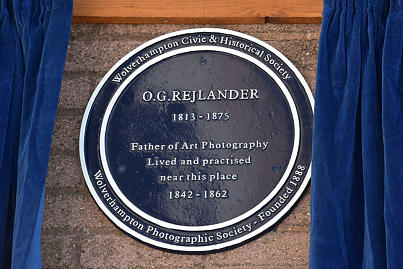
The Mayor of Wolverhampton, Barry Findlay
and the Lady Mayoress, with Wolverhampton Photographic Society
members (the late) David Kingston (right) and Roy Hawthorne (left),
with a replica of the new Rejlander Commemorative plaque.
The actual plaque is mounted on the wall behind them. (2016)
The new blue plaque in honour of Oscar Rejlander
which commemorates his pioneering work carried out at his studios
at 42 Darlington Street, Wolverhampton. In this tiny studio he pioneered
Art Photography and, in 1857, produced his famous
composite photograph ‘The Two Ways of Life’


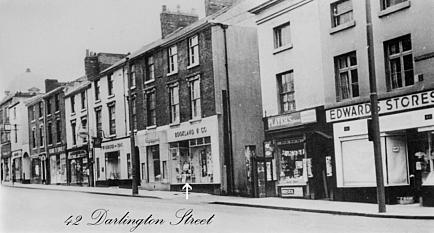

Fold Street car park in lower Darlington Street which
now occupies the space where Rejlander’s studio was located









